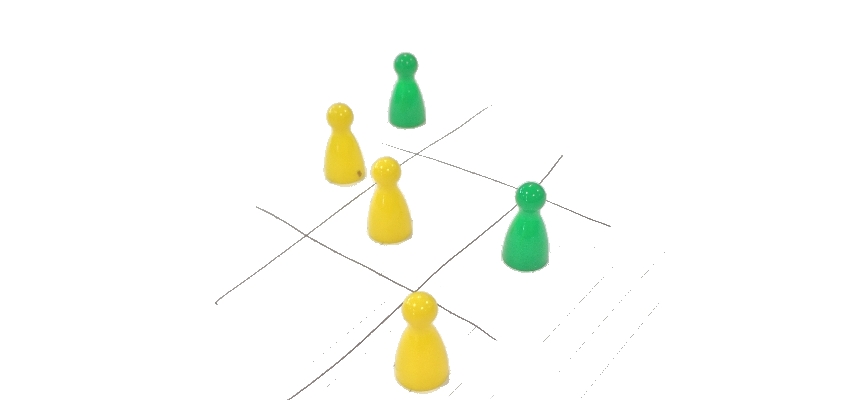
Tic Tac Toe Redesign
4 mins
The game Tic Tac Toe is one of the most widely known games in existence and most of us would have been taught it by a family member or friend early on in life but this does not stop it from being considered a very limited game in both sense of mechanics and enjoyment. The task me and my group were given in are practical today was to develop and iterate upon Tic Tac Toe.
How to Begin?
This seemed an easy task to begin with; it’s so basic and ends in a draw nearly every time. How could we not improve this? We began to play the basic game of Tic Tac Toe. Observing the choices we were making along with the consequences of these. We made are conclusions and then began to work on addressing what didn’t work and how we could improve what did.
The First Changes
We discovered the game does have its strengths such as the simplicity of the rule, the basic concept of the game is not without merit and it can be played anywhere with very limited objects. However the weakness do strip most of the enjoyment out of the game. These being the depth of the game being shallow, allowing anyone with a basic understanding of the game to know how to play it well meaning that it will indefinitely end in a draw and if it doesn’t it was most likely out of boredom of the other player. We started with a very simple change, a bigger board thinking in are naivety that this may make it more interesting. It didn’t work, it allowed too many options for the player and this allowed people to win with too much ease and gave very little chance to counter a movement. The conclusions we drew meant that this new version had addressed some of existing issues and made a host of new ones. We decided it may work better with more people. We tried the same size grid again and went at it with four of us. This did fix the issue of addressing winning movements, but it achieved this too well by making it so players would gang up against someone who was close to winning and blocking all possible chances, this meant that it became near impossible to win.
Back to the drawing board
We scrapped the previous ideas, they did provide enjoyment but more so out of sheer brokenness of the mechanics, not the actual game itself. We thought the basic game of Tic Tac Toe was so widely known was down to it simplicity and ease to have everything to play, we wanted to keep these features. We began thinking of how to address the existing issues of the game again; lack of depth and stalemates. How could we add depth? We asked ourselves, how is it done in other games? Why does chess work? The conclusion we came to was preplanning, this was simple to add and allows for multiple outcomes. This existed though in the base game, so how could we build on this? The idea then came, we would break the game into two sections, the first part would be the placing of the counters and the second part will be the movement (all the counters for the players must be placed down taking it turns as though playing a normally game of Tic Tac Toe, then continue turned based but with the movement of counters). This meant we had the base game still there in essence but with a simple change making it easy to explain and execute. We started by expanding the play area to a 4x4 grid and a maximum of three counters for each of the two players. This showed promise but having only the restriction of allowing the players not to share squares didn’t work along with the large amount of surface level options meaning less thought went into each action (I feel this also allowed to much breathing space resulting in actions having less of an impact). We tried increasing the number of counters to four but this had very little impact. We lowered the grid back down to the traditional 3x3 and only three counters each. This meant at the end of the placement stage three empty spaces existed giving the surface level options. By having this amount it allowed for the players to easily understand what they could and couldn’t do in a simple sense but allowed the game to progress quickly and have a short play time. We came across a problem, stalemates could still happen. If the player didn’t move then the game could never end, we addressed this by having it so they must move each turn. This had a knock-on effect that added a sub-surface level of complexity by allowing for players to force the other players hand by blocking counters of them making only a handful of options available to them. At this stage we felt we had improve the game of Tic Tac Toe and the practical was over.
Subscribe
Subscribe to this blog via RSS.
Categories
Ai 1
Blog 13
Design 8
Snake 3
Thoughts 1
Concept 3
Birdman 2
Recent Posts
Popular Tags
Blades of war (1) Development (4) Ai (1) Dynamic fire (1) Blog (13) Board game (1) Play and games (1) Design (8) Low level programming (10) Snake (3) Thoughts (1) Endless runner (4) Play & games (2) Global intervention (2) Concept (3) Birdman (2) Networking (1)
